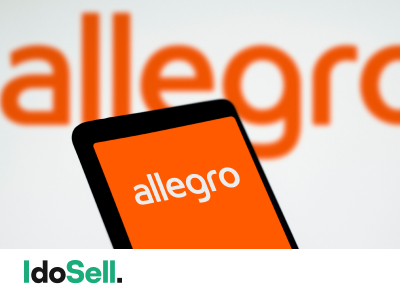
Jak ustalać ceny towarów i wykorzystać strategię Dynamic Pricing? Sprawdź poradnik od IdoSell
Ustalenie cen towarów w sklepie internetowym jest ważnym punktem twojego biznesu. Na cenę towaru wpływa wiele czynników. To, ile cena produktu powinna wynosić, żeby sprzedaż generowała jak największy zysk, nie jest takie oczywiste. Poznaj najważniejsze zasady wyceny towarów i zwiększ szanse na skuteczną sprzedaż dzięki modułowi Dynamic Pricing.

Zgodnie z wynikami badań Biura Informacji Gospodarczej ERIF z 2018 roku klient, który podejmuje decyzję o zakupie, bierze pod uwagę przede wszystkim cenę produktu (51 proc.). Najnowsze wnioski z badań konsumenckich KPMG podkreślają, że w dobie społecznej izolacji i niepewnego jutra, ważnym elementem e-commerce jest również potrzeba personalizacji klienta.
Żeby budować silną i rozpoznawalną markę, powinieneś zadbać o odpowiednią strategię cenową i długoterminową relację z klientem.
Jak wycenić towary w sklepie internetowym?
O czym powinieneś pamiętać przy ustalaniu ceny swoich produktów? Weź pod uwagę cztery poniższe czynniki:
1. Koszty własne
Kiedy sprzedajesz towar, ponosisz koszty związane z zakupem od producenta lub jego wytworzeniem. Oszacuj te koszty, zakładaną marżę oraz inne koszty operacyjne.
Wskazówki
- Ustal koszty zakupu i produkcji towaru
- Oszacuj dodatkowe koszty operacyjne (np. składowania towaru, promocję itd.)
- Sprawdź, jaką zazwyczaj marżę ustalasz na towarach
Pamiętaj jednak, że cena towaru, którą ustalisz wyłącznie na podstawie swoich kosztów, nie uwzględni pozostałych czynników, czyli potrzeb klienta oraz konkurencji sklepu. Sprawdź, o czym jeszcze musisz pamiętać.
2. Zapotrzebowanie na dany towar
Cena towaru powinna odzwierciedlać nie tylko wartość towaru, lecz również potrzeby klienta. Dlatego odpowiedz sobie na pytanie, kim jest twój klient i czego oczekuje. Czy bardziej ceni sobie promocje, czy prestiż? Preferuje drogie nowinki czy przecenione klasyki?
Wskazówki
- Określ profil swojego klienta
- Zastanów się, czy sprzedajesz towary sezonowe. Może warto ich ceny uzależnić od przejściowych potrzeb klientów?
- Obserwuj trendy. Czy dany produkt jest pożądany na rynku? A może jego popularność zmalała?
- Oceń, czy sprzedajesz towary unikatowe (trudno dostępne na rynku), czy raczej towary popularne
- Określ, czy oferujesz produkty luksusowe, które dotrą do wąskiego grona klientów. Taka grupa ceni sobie jakość i jest skłonna zapłacić więcej
3. Konkurencja
Niestety, w swojej branży masz już najprawdopodobniej konkurencję. Sprawdź, w jakiej cenie sprzedają oni towary. Ważne jest monitorowanie cen konkurencji i szybka reakcja na zmiany. Wystarczy wielka obniżka cen u twojego konkurenta, żebyś zaobserwował spadki sprzedaży w swoim sklepie.
Wskazówki
- Poznaj swoich konkurentów, ich ofertę i ceny
- Zastanów się, czy warto obniżyć ceny (np. o kilka procent od cen konkurencji)
- Jeśli zdecydujesz się na utrzymanie poziomu cen rynkowych, zaoferuj swoim klientom coś, żeby by się wyróżnić (np. darmowe zwroty, szybką dostawę, rabat na kolejne zakupy)
- Reaguj na zmiany cen konkurencji
- Zmieniaj ceny i testuj zachowania klientów
- Dostosuj cenę do dostępności towarów
4. Kanał sprzedaży, który pracuje na twoją korzyść
Klienci podążają nie tylko za ceną. Liczy się relacja ceny do korzyści klientów i wartości danego towaru. Warto wyceniać produkty wg ich wartości dla klientów i różnicować ceny towaru w zależności od grupy docelowej. Klient, który kupuje w marketplace, to klient skoncentrowany przede wszystkim na szybkiej dostawie.
Pamiętaj, że sprzedaż w marketplace jest sprzedażą krótkoterminową, bez szans na dłuższą relację z klientem. Żeby zbudować dobrze prosperujący sklep, warto mieć bazę lojalnych klientów.
Wskazówki
- Zmniejsz udział sprzedaży w kanałach, w których jest tłoczno w twojej branży i przez to zaczynasz przepłacać (sprawdź, czy jest to Allegro, eBay a może Amazon)
- Zainwestuj w reklamy Google i postaraj się, żeby klient zamiast do marketplace, trafił bezpośrednio do twojego sklepu
- Poznaj swoich konkurentów z poziomu wyszukiwarki Google, sprawdź ich ofertę i ceny
Jak wykorzystać strategie cenowe Dynamic Pricing?
Jest wiele aspektów, które powinieneś uwzględnić, kiedy ustalasz cenę towarów. Pamiętaj, że cena powinna być korzystna zarówno dla sprzedawcy, jak i dla klienta. Skuteczna strategia cenowa opiera się na analizie potrzeb klienta docelowego i analizie konkurencji. Żeby ustalić optymalną politykę cenową, wykorzystaj moduł od IdoSell - Dynamic Pricing.
Dla kogo jest Dynamic Pricing?
Dynamic Pricing jest dla ciebie, jeśli:
- sprzedajesz na Allegro, eBay'u i Amazonie
- korzystasz z usługi Reklamy Google od IdoSell
- zależy ci na budowaniu silnej marki własnej
Sprzedaję towary niszowe, czyli jestem producentem:
Wykorzystaj to, że twoje produkty są unikalne na rynku i zadbaj, żeby klient kupował je bezpośrednio u ciebie w sklepie. Zalecamy wykorzystanie strategii "w marketplace drożej", przy jednoczesnym intensywnym reklamowaniu swoich towarów w Google za pośrednictwem usługi Reklamy Google od IdoSell. Dzięki takiej polityce cenowej masz szansę ściągnąć klienta bezpośrednio do swojego sklepu i zbudować z nim długotrwałe relacje.
Sprzedaję towary popularne i mam dużą konkurencję:
Jeśli sprzedajesz towary popularne, najprawdopodobniej oznacza to, że masz sporą konkurencję. Jeśli opierasz swoją sprzedaż o marketplace, zapewne nieraz poczułeś, że jako sprzedawca jesteś w trudnej pozycji. Nie dość, że opłaty prowizyjne wciąż rosną, to coraz większe są również wymagania, które są narzucane na sprzedających.
Jeśli sprzedajesz w marketplace, prawdopodobnie koncentrujesz się na sprzedaży krótkoterminowej i tym samym tracisz szansę na zbudowanie długotrwałej relacji z klientem. Co więcej, jakiekolwiek próby nawiązania takiej relacji są przez marketplace surowo karane, nawet blokadą konta sprzedającego. Taki model sprzedaży nie daje przestrzeni do budowy niezależnej marki sklepu i sprowadza merchanta jedynie do roli bezimiennego dostawcy towaru dla klienta marketplace.
Tips & Tricks
- Jeśli w panelu twojego sklepu pojawią się nieścisłości w cenach towarów (czyli np. cena w panelu jest inna niż w ofercie na Allegro lub gdy prowadzisz kilka ofert tego samego produktu), zalecamy wykorzystanie funkcjonalności, która umożliwia pobranie cen z ostatniej wystawionej oferty danego towaru do panelu sklepu. Cena widoczna na Allegro zostanie zapisana na karcie edycji danego towaru, jako cena bazowa dla Allegro, a ty będziesz miał pewność, że ceny w twoim sklepie odzwierciedlają twoją ofertę na Allegro.
- Strategia "w sklepie taniej" pozwoli ci skutecznie zarządzać cenami w twoim sklepie internetowym. Wybranie opcji "Taniej niż na Allegro" i wskazanie 5 proc. spowoduje obniżenie cen towarów w panelu sklepu o 5 proc. w stosunku do ceny na Allegro. Dzięki temu zostawisz sobie przestrzeń na sprzedaż na Allegro, ale co najważniejsze, oferta w twoim sklepie będzie bardziej atrakcyjna dla klientów. Jak jednak zachęcić klienta, żeby bezpośrednio odwiedził twój sklep? Wyjaśniamy.
- Jeśli ustawisz cenę twojego produktu na trochę niższą niż średnia rynkowa i dodatkowo zainwestujesz w Reklamy Google od IdoSell, masz szansę ściągnąć klienta, który szuka towaru w Google i trafi na reklamę twojego produktu w atrakcyjnej cenie.
Wskazówka! Jeśli klient po wejściu w reklamę trafi do twojego sklepu, zadbaj o to, żeby jego customer experience był najlepszy z możliwych i sprawił, że klient po następne zakupy wróci już bezpośrednio do ciebie.
Dzięki Dynamic Pricing:
- ściągniesz klienta bezpośrednio do sklepu i stworzysz z nim długoterminową relację
- zbudujesz bazę lojalnych klientów, do których możesz kierować kolejne działania marketingowe (np. newsletter, oferty rabatowe)
- uniezależnisz się od marketplace i narzuconych zmian prowizji
Powiązane treści


